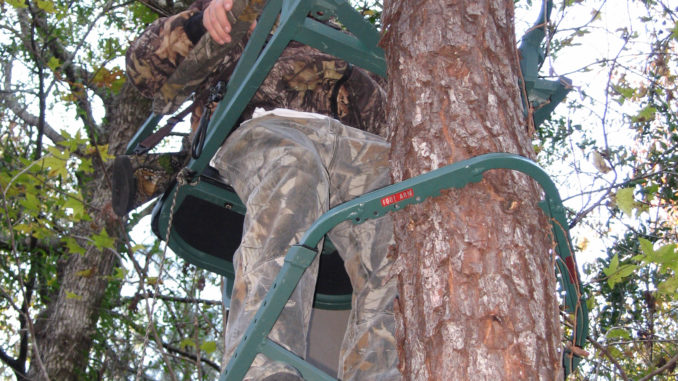
Bill Cline’s strategy is one that relies completely on climbing stands. His game plan is all about mobility. In fact, he relies on climbing stands so much, he builds his own to his exact liking.
“I think of it as being mobile and agile in order to be hostile to the deer population,” he said. “I feel I’ve got to be able to change places based on where most of the deer are located as the season progresses, as well as on a day-to-day basis based on wind direction.
“One tactic I use is scouting during the mid-day and carrying a climber with me while I’m at it. I know the land where I hunt pretty well, so I do usually have a good idea for what’s going on. When I see the right sign that deer have moved into a new place and the sign is hot, I hang a climber on a good tree right then. I’ll get back and hunt that place that very afternoon or the next morning.
“When I find the place I want to hunt, a specific spot on a specific trail but I’m not hunting that day, I’ll locate two or three different trees I can use when I return to hunt. Thus, I can cope with different wind directions. Just as important to me is to calculate a no-hunt wind direction. That’s important any time of the season, but late season, when deer are already pressured, they tolerate no human scent. If the wind is just wrong on a given day, based on my stand options, I’ll simply not hunt an area rather than risk blowing a big buck out of an area. I’ll have other areas to hunt on any given wind direction, and I’ll save the hotspot until I can hunt effectively.”
Cline said that a real key to late-season success is mobility and getting high in the stand, especially when hunting cutover areas.
“By climbing high, you can see down into cutover areas where deer feel safe because of the surrounding cover,” he said. “It’s a great way to see bucks and does.”
Editor’s note: This story is part of the article titled It’s Never too Late in the December issue of South Carolina Sportsman magazine, now available on newsstands or in a new digital edition.




Be the first to comment